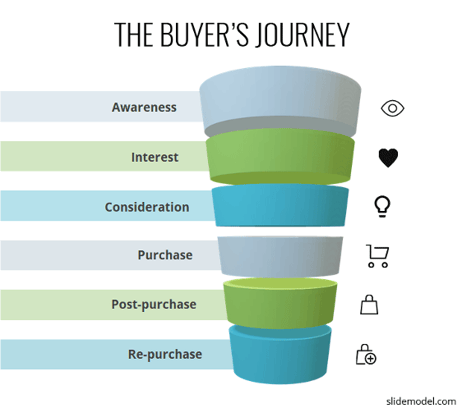
Revitalizing Differentiation: The Power of Customer Experience in Brand Positioning
While the concept of the customer experience certainly is not a new one, the dawn of the internet opened the world’s eyes to the importance of the user experience. This helped shape a new field with significant influence over how organizations deliver value and interact with customers.
The experience behind a brand is sometimes its primary source of differentiation and the basis for brand positioning. The Keller Fay Group found that 58% of consumers gave high credibility to information heard by word of mouth, with 50% reporting they were “very likely” to make a purchase as a result of a relevant conversation. In the companies studied, word of mouth drove more than 10 percent of sales volume. And nothing drives word-of-mouth advertising like great experiences.
Learning from Mistakes: The Impact of Customer Experiences on Brand Value
Brand strategy consultants are emphasizing the importance of delivering an experience that makes brands stand out from their competition. Some are learning the hard way. In 2017, United Airlines had a brand crisis that wiped out $1.4 billion in value overnight when a passenger’s experience went viral on social media. And, you may not have heard about Juicero, a company that made a device for fruit and vegetable juicing. It fell victim to a brand crisis when it was discovered the proprietary juice packets needed for its $699 juicer weren’t exactly proprietary. Juicero was forced to drop the price of its juicer to $200 and then ultimately went out of business.
Customer Experience Touchpoints Across the Buyer’s Journey
In its simplest form, customer experience is the sum total of all interactions (touchpoints) that occur between a company and its customers throughout their relationship. Marketers commonly consider the customer experience across three distinct phases: pre-purchase, purchase, and post-purchase.
Pre-purchase
Pre-purchase touchpoints, which include advertising, websites, public relations, sales collateral, and word of mouth, create awareness of and familiarity with the brand. As one would expect, these touchpoints educate consumers, create a sense of interest and preference, and ultimately lead to purchases of the brand’s products or services.

Purchase
Purchase touchpoints vary significantly by industry and transaction type. For consumer products, these touchpoints may take place in a retail store and include things such as point-of-purchase collateral and other merchandising vehicles. In B2B, purchase touchpoints could be sales meetings with customers to approve or sign contracts. No matter what the format, however, the goal is the same: to facilitate a smooth transaction, reinforce the choice the buyer made, and pave the way for ongoing satisfaction.
Post-purchase
As in the purchase phase, post-purchase touchpoints vary widely by industry. These typically involve factors such as customer support, repairs, warranties, ongoing maintenance and service, and follow-up communications. Post-purchase touchpoints aspire to reinforce customers’ ongoing satisfaction with a purchase, encourage additional purchases (i.e., remain loyal), and encourage favorable word-of-mouth marketing.
Crafting the Customer Journey for Enhanced Brand Loyalty
Marketers sometimes depict the customer experience using a customer journey map. This type of map serves as a visual tool that puts the customers front and center in the organization’s conception of experience. When done effectively, maps highlight potential gaps and shortcomings in the experience, especially when compared to the brand promise the experience is supposed to deliver.
The customer experience journey map is a valuable tool for shaping the customer experience, but its effectiveness hinges on how it's used. It's crucial for marketers to anchor the development of customer experiences in the brand's positioning. Using this tool effectively helps businesses pinpoint and improve moments in the customer journey that don't meet expectations, boosting satisfaction. It also promotes a comprehensive understanding of the customer journey, ensuring every interaction strengthens the brand's value in the eyes of the customer.
Marketers who opt to follow customer research conducted outside the context of their brands and adopt generic industry norms and best practices often find themselves in a sea of sameness, where brands become monotonous and indistinguishable from one another. This approach overlooks the unique aspects of the brand that can be leveraged to create a distinctive customer experience, ultimately diminishing the potential for true brand differentiation and emotional connection with customers.
READY TO TRANSFORM YOUR BRAND'S CUSTOMER EXPERIENCE AND STAND OUT FROM THE COMPETITION?
At FullSurge, we understand the critical role of customer experience in brand differentiation and positioning. Our expertise in navigating the complexities of brand strategy can help you avoid costly mistakes and capitalize on the power of word-of-mouth marketing.
Whether you're reevaluating your customer journey touchpoints or seeking to refine your brand positioning, our team is equipped to guide you toward creating memorable and impactful customer interactions. Don't let your brand blend into the background. Contact us today to craft a customer experience that truly differentiates your brand and drives long-term success.
Recent Posts
Posts by Topics
- Brand Strategy (57)
- Brand Strategy Consulting (28)
- Brand Differentiation (27)
- Customer Experience (24)
- Brand Positioning (22)
- Marketing Strategy (9)
- Brand Extension Strategy (8)
- Customer Behavior (8)
- Brand Architecture Strategy (7)
- Brand Extension (7)
- Brand Growth (7)
- Brand Portfolio & Architecture (7)
- Brand Purpose (7)
- Brand Value Proposition (7)
- Brand Engagement (6)
- Brand Portfolio Strategy (6)
- Brand Storytelling (6)
- Rebranding Strategy (6)
- Brand Awareness (5)
- Brand Image (5)
- Branding (5)
- Rebranding (5)
- Technology (5)
- B2B Brand Strategy (4)
- Brand Experience (4)
- Value Proposition (4)
- Brand Extendibility (3)
- Brand Metrics (3)
- Brand Repositioning (3)
- Corporate Branding (3)
- Differentiation Strategy (3)
- Measurement & Metrics (3)
- Brand Engagement Strategy (2)
- Brand Portfolio (2)
- Brand Promise (2)
- Brand Voice (2)
- Digital Marketing (2)
- Digital and Brand Experience (2)
- Employee Brand Engagement (2)
- Brand Architecture (1)
- Brand Development (1)
- Brand Equity (1)
- Brand Identity (1)
- Brand Measurement (1)
- Brand Name (1)
- Brand Strategy Consultants (1)
- Brand Strategy Firms (1)
- Digital Strategy (1)
- Internal Branding (1)
- Messaging (1)


